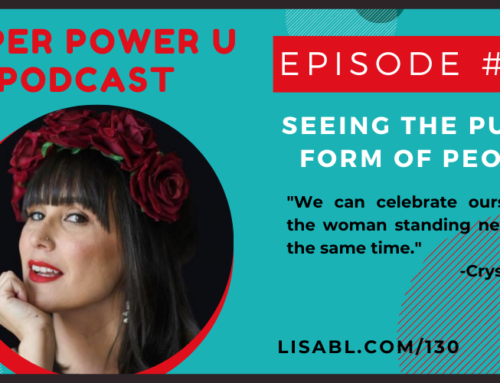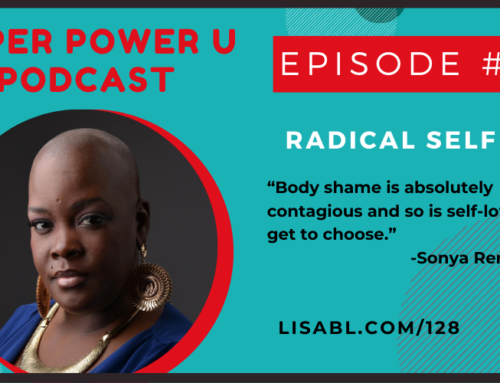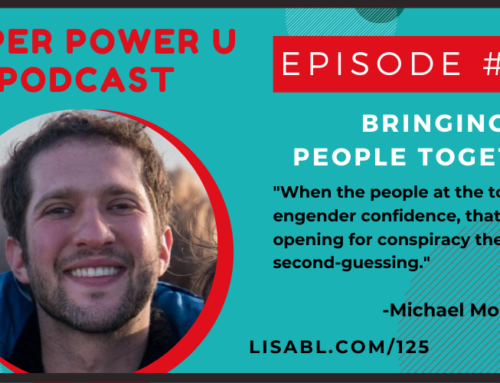Hello, hello. Today is the official Month #2 update of the Intermittent Fasting experiment. And after that I want to tell you about a book that has had a profound impact on my life. It's a book called “Feeling Good” by David Burns. But first, let's do what Lisa's listening to. This week I discovered a great new show called “Aging Youthful” where Mary Black the host isDISRUPTING what 50 and looks like. Mary wants to drop kick the idea of ‘aging gracefully’ BACK into 20th century encourages listeners to find purpose and passion at ANY AGE! Check out Aging Youthful’s episodes on Making Peace with Our Bodies at Any Age, What Boomers can Learn from Millenials and what Mary’s learned from Dog-sledding in Alaska for 22 years and over 100,000 miles.
In Episode #23, Intermittent Fasting – A Primer I introduced some basic tenets of intermittent fasting and the plan for my personal experiment. Then in Episode #27 I shared my results from the first month.
At that point I had already learned the following fasting lessons:
- In spite of it seeming impossible to go without eating for an entire day, it's not only possible but it actually gets easier the more you do it
- It's easiest to start with 16/8 fast and work your way up to longer fasting times
- It’s easiest to focus on fasting time only at first and not the types of food you’re eating
- It's really important to drink a lot of water.
- One of the greatest benefits is the freedom from being controlled by food and completely aware of the choice
- That it's easy to get emotionally sidetracked and quit before the benefits show up. Having a plan to do it for a month regardless of any perceived outcomes is important.
In the past four weeks since then, my life has been uncommonly emotionally stressful (for reasons unrelated to fasting!) and I found it more difficult than usual to not numb myself with food and therefore to stick with my fasting protocol. Even though I haven't been perfect about it I have also been grateful to have broken the habit of using food habitually, without thought or to numb or self-medicate. It's almost like the option is off the table due to the basic habit of fasting, as imperfect as I've been.
Reviewing my data from the past 8 weeks in a very cursory way, I notice that for the first month my average fasting time per day was 20.8 hours per day whereas my average fasting time this past month dropped to 17.8 hours per day. Unsurprisingly my weight loss was also substantially less dropping from 7.2 lbs per month to 4.4. Now some of that may be me getting closer to an ideal and healthy weight, however, I am concluding that fasting for weight loss may be more effective when averaging 20 hours per day with all other factors like counting calories or paying attention to carb, protein and fat intake is taken off the table. And that's what I'll be aiming for this coming month.
So, as I said, I've been going through a rather rough period of time with a lot of things shifting under my feet and a lot of uncertainty and instability. Because I've done a lot of self-work over the years I mostly feel like I can ride the waves of extreme and painful emotion without going into a major depression. But that wasn't always the case. There was a book I read early on in my journey that has had a big impact on my thinking, call “Feeling Good” by David Burns. And it’s not just me.
Depression and Mood Disorders are an incredibly common experience in our culture. More than 20 million American adults are impacted by mood disorders. And Cognitive Therapy, which is the foundational approach in David Burns book and which focuses on the idea that depression and negative feelings come from negative thoughts, so if we can challenge and change those thoughts we will feel better, has been shown to have an enormous beneficial impact.
Researchers followed two groups of similar patients, one who was given Burns's book to read within a month, and another who were not. Not only did the Feeling Good group experience a significant amelioration of depressive symptoms compared to the blind group, but the symptoms stayed away.
As Burns notes in his book, “Unpleasant feelings merely indicate that you're are thinking something negative and believing it.”
“Every time you feel depressed about something, try to identify a corresponding negative thought you had just prior to and during the depression. Because these thoughts have actually created your bad mood, by learning to restructure them, you can change your mood.”
One of the central benefits of Feeling Goods is the outline of 10 central thought patterns which Burn’s calls “Cognitive Distortions”.
Cognitive Distortions
- All-or-Nothing Thinking. “This is the tendency to evaluate yourself and your experience in extreme, black-or-white categories. This cognitive distortion is at the route of perfectionism. An example of All-or-Nothing thinking in action would be to regard an error or some problematic action as proof that you are completely inadequate or worthless. You could combat it if you recognize the thought pattern but isolating the error as one unique event which may or may not happen again.
- Overgeneralization. “Is the belief that if something happens to you it will always happen over and over again. Overgeneralization might show up in the thought after speaking in public, I’m a terrible speaker or even more of an over-generalization, I always screw up. If you realize you’ve made yourself vulnerable to overgeneralization you have the option of replacing it with I’ve learned I need to practice out loud in advance.
- Mental Filter. This is the thought habit of picking a negative detail and dwelling on it which results in the feeling or believing that the entire situation is terrible. An example of this might be someone focusing obsessively on a minor physical trait like a pimple on their face and dwelling on it so much they feel ugly or entirely self-conscious.
- Disqualifying the Positive. One extremely destructive mental illusion is the tendency to change neutral or even positive experiences into negative ones. If someone prone to this distortion received a compliment they might discount it to themselves or even to the person giving the compliment as insincere or attribute it to the person trying to be nice or worse.
- The cognitive distortion of Jumping to Conclusions has two subsets, “mind reading” and “fortune telling”
- Mind Reading is when you subscribe a belief to someone else like “they are criticizing me” and you assume this as reality without even checking to see if it’s true.
- Fortune Telling or Future Worry which is when your thoughts focus on an imagined terrible future outcome.
- Catastrophizing occurs when you see an imperfection or a fear and exaggerate its importance: This might sound something like I’m going to feel so nervous about flying which is going to turn into a panic attack and claustrophobia. Or the error I made at work is going to ruin my reputation and I’ll be fired.
- Minimization is the mental habit of shrugging off a positive trait or event as unimportant…as in thinking “sure I got a good grade, but it doesn’t mean anything…I just got lucky”.
- Emotional Reasoning is the tendency to think of emotions as evidence for the truth as in spite of evidence to the contrary you allow a negative feeling about yourself to live as the truth, as in I feel like a failure so I am a failure.
- Should Statements is a version of cognitive distortion that has you believing that you have no choice and that something outside of yourself requires that you behave in a certain way. The alternative thought is to recognize that you have a choice. This one is in a way easy to address by building the habit of catching yourself saying “should” and replacing it with “could”.
- Labeling and Mislabeling is the thought pattern in which someone identifies a label or behavior as the basis for a negative self-image. Mislabeling involves attaching a specific and emotionally heavily loaded identifier to yourself or the situation as in I’m a “screw-up”.
- Personalization is a distortion in which you assume responsibility for a negative event or reaction from someone else as a result of something you did even when there is no basis for that being true. For example, imagine turning someone down for a date who soon afterward has a car accident…personalization would have you irrationally believe that somehow your action may have been responsible for the negative event.
- Tunnel Vision is when you see only negative aspects of a situation or person or yourself. An example of this distortion might be “my spouse never cleans up or helps around the house”.
So what to do. The reason this book and cognitive therapy, in general, has made such a big impact on so many people is that it increases our awareness that our thoughts lead to our feelings and when we’re aware of the distorted thinking habits we’re susceptible to, we can alter the thought.
Three Crucial Steps When You Are Upset
- Zero in on those automatic negative thoughts and write them down.
- Read over the list of cognitive distortions and recognize in what ways you might be twisting, turning or blowing the reality out of proportion.
- Substitute a more objective or nuanced thought that reduces the likelihood that it will lead to looking down on yourself or feeling bad about the situation.
So there you have a brief overview of Feeling Good by David Burns. Even though I originally read the book many decades ago it is one of those
Mentioned in This Episode:
- Aging Youthful Podcast
- Feeling Good (book) by David Burns
Super Power U Resources:
- Feedback and show ideas to hey@lisabl.com
- Super Power U Facebook Page
Lisa Betts-LaCroix on Twitter — @LisaBL - Super Power U Podcast on iTunes, Stitcher, Google Play
LisaBL.com









Leave A Comment